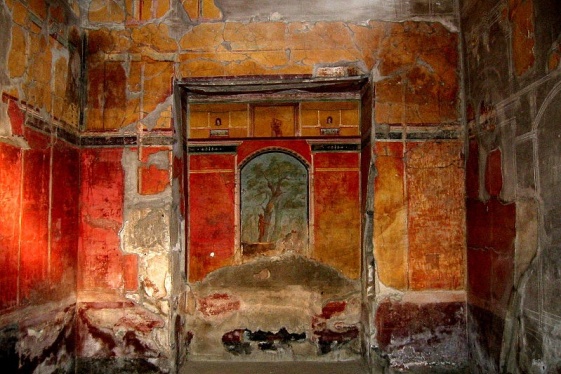

In the area that is today Friuli Venezia-Giulia, since ancient times, various populations such as the Euganeans and Venetians have contributed to the development of metal crafts and metal processing. Jewellery making is the barbarian art par excellence. The filigree and silver and gold plating decorate a nomad body like a welcoming space. Shi'ite art, also linked to a nomadic and warrior economy, was interested in this luxurious and decorative art that was easily transported and served as a memory.
Runic script appears to have had its origins in jewellery as a magic script. Nomadic metal workers sculpted precious stones and gold, dedicating themselves to both jewellery and weapons. They even decorated items that would be used only once, such as the point of a lance, or they created amulets with propitiatory powers.
Thus even today a marvellous renaissance technique like Medici Inlay, also known as Florentine mosaic, geographically distant from Gorizia it would seem, is being revived in a contemporary jewellery scene that continues to assimilate techniques, styles and imagery from distant lands. Inspired jewellers continue to capture in this art the magic of communication and conservation of ancient know how cut into a stone or a shiny ornament.
The technique
The technique of inlay in semiprecious stones is very ancient and complex. Also known as Florentine mosaic, this art was created in 16th century Florence by the Medici family and was perfected over the course of the centuries thanks to the establishment of the Opificio delle Pietre Dure in 1588. It consists of fragments of pieces of coloured stone built up on top of each other creating a design reproducing flowers, landscapes or still life.
This technique can be used for table tops, panelling, boxes, medallions and pendants. To the eye, the end result appears identical to a painting.
The process
First the structure of the jewellery is created through the sheet processing prior to the assembly of the various components through soldering. Thus a shell is create with multiple cavities in which the semiprecious stones, cut perfectly to the required shape, are placed. Once all the spaces have been filled, the surface is smoothed using a diamond disc surface grinder.
Gorizia
The history of Gorizia began with the founding of the city in around 1001, but pre-Roman and Roman remains have been found in the area that today forms part of the city and on the city boundaries. For a long time, Gorizia was the crossroads of three civilisations: Latins, Slavs and Germans.
Cosmopolitan by nature, after the historical events of the 1940s and the loss of a large part of its natural hinterland, the city has discovered new activities and prospects within Italy and the new Europe, due to some extent to the liberation of Slovenia from the former Yugoslavia and the eastward spread of the European Union.
By Camera di Commercio di Gorizia with Unioncamere
You may be interested
-
"Storia e memorie" at Casa Italiana Sociocult...
The "Storia e memorie" group of 21 students and teachers from Friuli and Sardegna returned...
-
“Audace”, Prosecco Doc Trieste Serena Wines 1...
Refining Prosecco Doc Trieste in its Gulf, using the experience of a large group such as S...
-
“L’America di Irene”: Paola Trappo’s Book on...
The stories of our Italian ancestors are all different, and all alike, all equally fascina...
-
“Studiare in Friuli”
The Convitto Nazionale "Paolo Diacono" WITH THE CONTRIBUTION OF Province of Gori...
-
10 most underrated Cities in Northern Italy
by Elisa della Barba Everyone's first visit, when in Italy, is dedicated to three...
-
10 UNESCO sites in Italy that maybe you don't...
Unknown among these known, the Excavations of Oplontis in Torre Annunziata (Naples), inclu...
-
11 Reasons You Should Be Drinking Prosecco
by Kerin O'Keefe Some say no other beverage defines the Italian philosophy o...
-
15 beautiful bridges you can cross in Italy
by Claudia Baroncelli Beyond monuments and churches, palaces and museums Italy al...










